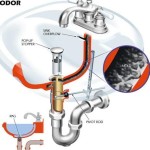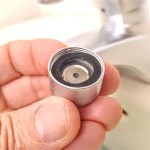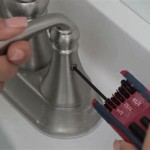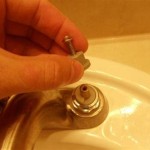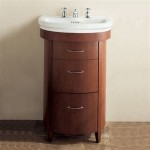How Should a Bathroom Fan Be Vented?
Proper ventilation in a bathroom is critical for maintaining air quality, preventing moisture buildup, and safeguarding the structural integrity of the building. A properly installed and vented bathroom fan effectively removes excess humidity, odors, and airborne pollutants generated during bathing or showering. The method of venting a bathroom fan is just as important as the fan itself. Incorrect venting can lead to a variety of problems, including mold growth, reduced fan performance, and even damage to building materials. This article will explore the best practices for venting a bathroom fan to ensure optimal performance and longevity.
The primary purpose of a bathroom fan is to exhaust moist air to the outside. When warm, humid air encounters cooler surfaces, condensation occurs. This condensation can lead to mold and mildew growth on walls, ceilings, and fixtures. Mold and mildew not only create unpleasant odors and unsightly stains but can also pose health risks, particularly for individuals with allergies or respiratory issues. Furthermore, excessive moisture can damage drywall, wood framing, and paint, leading to costly repairs. A properly vented bathroom fan actively removes this moisture-laden air, preventing these problems from occurring.
Several factors influence the ideal venting method, including the bathroom's location, the building's construction, and local building codes. Understanding these factors is crucial for selecting the appropriate venting strategy and ensuring compliance with regulations.
Key Point 1: Directing Exhaust Air Outdoors
The fundamental principle of bathroom fan venting is to direct the exhaust air directly to the outside of the building. This prevents the humid air from being recirculated within the home or being trapped in enclosed spaces. Venting into an attic, crawl space, or wall cavity is strictly prohibited because these areas typically lack proper ventilation. The moisture-laden air will condense in these spaces, leading to mold growth, wood rot, and other moisture-related problems. These issues can compromise the structural integrity of the building and create unhealthy living conditions.
The exhaust duct should terminate at a designated exterior outlet, such as a wall vent, roof vent, or soffit vent specifically designed for bathroom fan exhaust. The choice of vent depends on the building's design and construction. Wall vents are often preferred for single-story homes, while roof vents may be necessary for multi-story buildings with limited wall space. Soffit vents, although sometimes used, are generally not recommended as they can allow moisture to be drawn back into the attic through the soffit ventilation system. The optimal location for the exhaust vent is one that minimizes the distance the air travels and ensures the exhaust is directed away from windows, doors, and air conditioning units.
The exhaust duct should be made of rigid metal ductwork whenever possible. Flexible ductwork, while easier to install in some situations, offers less resistance to airflow, which can reduce the fan's efficiency. Flexible ductwork also tends to sag over time, creating low spots where moisture can accumulate. If flexible ductwork is unavoidable, it should be kept as short and straight as possible, and it should be insulated to prevent condensation.
Proper sealing of all ductwork connections is essential to prevent air leakage. Air leakage not only reduces the fan's effectiveness but also allows warm, moist air to escape into the attic or wall cavity, potentially leading to condensation problems. Use foil tape or mastic sealant to create airtight seals at all joints and connections. Avoid using duct tape, as it tends to degrade over time and lose its adhesion.
Key Point 2: Selecting the Appropriate Duct Size and Material
The size of the exhaust duct is crucial for ensuring optimal airflow and preventing back pressure. The duct size should be consistent with the fan's outlet size and the manufacturer's recommendations. Undersized ducts restrict airflow, reducing the fan's effectiveness and potentially causing it to overheat. Oversized ducts, while not as detrimental, can increase costs and may not be necessary for the fan's performance.
Bathroom fan manufacturers typically specify the recommended duct size for their products. This information can be found in the fan's installation instructions or on the fan's packaging. Common duct sizes for bathroom fans range from 4 inches to 6 inches in diameter. Larger bathrooms or fans with higher CFM (cubic feet per minute) ratings may require larger duct sizes.
As previously mentioned, rigid metal ductwork is the preferred material for bathroom fan venting. Galvanized steel or aluminum ductwork provides a smooth, durable surface that minimizes airflow resistance. Rigid ductwork also resists sagging and crushing, ensuring consistent airflow over time. Flexible ductwork, made of aluminum or plastic, can be used in short runs where rigid ductwork is impractical. However, it is important to choose insulated flexible ductwork to prevent condensation. The insulation helps maintain the temperature of the air inside the duct, reducing the likelihood of condensation forming on the duct's surface.
The type of duct used should also be appropriate for the climate. In colder climates, insulated ductwork is essential to prevent condensation and heat loss. In warmer climates, insulation may not be as critical, but it can still help improve energy efficiency by reducing heat gain.
When installing ductwork, minimize the number of bends and turns to reduce airflow resistance. Sharp bends and turns significantly impede airflow, reducing the fan's efficiency. If bends are unavoidable, use smooth, gradual bends rather than sharp angles. Each bend adds resistance to the airflow, so it is important to minimize their number as much as possible.
Key Point 3: Addressing Condensation and Backdrafting
Condensation within the exhaust duct is a common problem, particularly in colder climates. When warm, moist air from the bathroom travels through the ductwork, it can cool and condense, forming water droplets. These water droplets can drip back into the bathroom or accumulate in the ductwork, leading to mold growth and reduced fan performance. To prevent condensation, insulate the exhaust duct from the fan to the exterior vent. This helps maintain the temperature of the air inside the duct, reducing the likelihood of condensation forming.
The insulation should be applied to the entire length of the ductwork, including all connections and seams. Use foil-faced insulation with a vapor barrier to prevent moisture from penetrating the insulation. Secure the insulation with foil tape or mastic sealant to create an airtight seal.
Backdrafting occurs when outside air enters the exhaust duct and flows back into the bathroom. This can happen when the fan is not in use, and the outside air pressure is greater than the air pressure inside the bathroom. Backdrafting can introduce cold air into the bathroom during the winter, increasing heating costs. It can also introduce pollutants, such as pollen and dust, into the bathroom, compromising air quality.
To prevent backdrafting, install a backdraft damper at the exhaust vent. A backdraft damper is a one-way valve that allows air to flow out of the duct but prevents air from flowing back in. The damper opens when the fan is in use and closes automatically when the fan is turned off. There are several types of backdraft dampers available, including gravity dampers, spring-loaded dampers, and motorized dampers. Choose a damper that is appropriate for the fan's CFM rating and the climate.
In addition to a backdraft damper, consider installing a vent cap at the exterior outlet. A vent cap is a protective cover that prevents rain, snow, and debris from entering the exhaust duct. Vent caps also help reduce backdrafting by shielding the exhaust vent from wind. Choose a vent cap that is designed for bathroom fan exhaust and that is made of durable, weather-resistant materials.
Regular maintenance of the bathroom fan and ventilation system is crucial for ensuring optimal performance and longevity. Clean the fan blades and vent cover regularly to remove dust and debris. Inspect the ductwork for any signs of damage, such as cracks or leaks. Replace any damaged ductwork or insulation promptly. Check the backdraft damper to ensure it is functioning properly. These simple maintenance tasks can help prevent problems and extend the lifespan of the bathroom fan and ventilation system.
In summary, proper venting of a bathroom fan is essential for maintaining air quality, preventing moisture damage, and ensuring the longevity of the building. By directing exhaust air outdoors, selecting the appropriate duct size and material, and addressing condensation and backdrafting, homeowners can create a healthier and more comfortable living environment.

Venting A Bath Fan In Cold Climate Fine Homebuilding

Blog

Bathroom Exhaust Fans Building America Solution Center

Installing A Bathroom Fan Fine Homebuilding

Bathroom Exhaust Fans Chicago Suburbs

Bathroom Exhaust Fan Gfci Vent Protection Requirements Checkthishouse

Bathroom Fan Venting Tips Gui

Bathroom Vent Piping To Near Exterior Inspecting Hvac Systems Internachi Forum

Best Practices Bathroom Venting Greenbuildingadvisor

Bathroom Exhaust Vents In Your San Antonio Area Home Jwk Inspections
Related Posts
